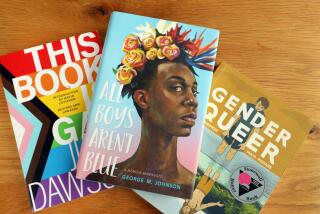UNDER DEADMAN’S SKINDiscovering the Meaning of Children’s...
UNDER DEADMAN’S SKIN
Discovering the Meaning of Children’s Violent Play
By Jane Katch
Beacon Press: 132 pp., $15
“Under Deadman’s Skin” is a study of violence and children, done in the manner of Vivian Gussin Paley and Jonathan Kozol. Jane Katch, a teacher who worked with Bruno Bettleheim at his Orthogenic School and taught at the Chicago Lab School with Paley, draws her conclusions by careful observation in the classroom, using the children’s own language to describe the emotions behind their games. Her class of 5- and 6-year-olds in this book is in a private school.
One child, a leader in the class, initiates games such as “Suicide” and endless discussions of violent movies he has seen. Katch sees quickly that the children have a hard time distinguishing between what’s real and what’s pretend in the movies; that violent play that is banned comes out in some other behavior, like bullying or excluding other children. Bettleheim’s words ring in her ears: “If you want to understand the murderous fantasies of these difficult children,” he told her, “first you must be willing to look at your own!” Bottled-up feelings simply gain power and create raw frustration in children. Play relieves these feelings of their obsessive power.
Katch asks the parents to pay more careful attention to what their children are watching on various screens, and looks instead for stories (found mostly in other cultures) that contain violence in clear fable form, often with morals. The blood-and-guts-for-no-reason violence of most movies and television shows leaves children with no sense of right or wrong. It is fun to hear the children talking. Their language is still so close to their emotions. They use it like an extra limb.
*
ACHILLES
By Elizabeth Cook
Picador: 116 pp., $16
Novels based on myths are more powerful for those readers who have carefully studied those myths. It often seems that mythological characters, such as Elizabeth Cook’s great Greek warrior, Achilles, resist coming alive on the page; our 21st century slang sounds strange coming from their mouths.
Achilles rumbles through this novel like Godzilla. His battle with the Queen of the Amazon is a constellation of verbs, and the novel’s background might as well be a punting reverie by Oxford students (Keats enters late as a character in the novel, dreaming of Achilles) on the river Styx.
*
MY FINE FEATHERED FRIEND
By William Grimes
North Point Press: 86 pp., $15
“It was the right bird in the wrong spot,” writes William Grimes, restaurant critic for the New York Times, of the day a chicken appeared in his patch of backyard in Astoria, Queens. It’s a delightful, Thurberish tale. “This chicken was huge, and it had obviously been eating well. Its black feathers shone, giving off a greenish purple iridescence in bright sunlight.”
The chicken terrorizes the neighborhood cats and eats their food. A friend puts Grimes in touch with “a real live farmer in New Jersey,” who tells him what to feed the chicken. Grimes studies the chicken, realizing he knows quite a bit about roasting, frying and fricasseeing chickens, but not a whole lot about live ones.
He fesses up to a certain “hypocrisy” when it comes to animals: “Once I meet them, I don’t want to eat them.” The chicken builds a nest and starts producing eggs. Grimes learns that it is a Black Australorp, Gallus domesticus. He writes about the chicken, and suddenly the paparazzi are in his yard.
One day, Garbo-like, the chicken disappears. Should she return, he writes, there will always be a “light in the window and a warm nest at the base of the pine tree.”
*
FAST GIRLS
Teenage Tribes and the Myth of the Slut
By Emily White
Scribner: 220 pp., $22
The slut, writes freelance journalist Emily White in this groundbreaking book, is a “way for the adolescent mind to draw a map
White quotes Susan Faludi: “The fear that there are not enough men is certainly related to the fear that there’s a girl out there who wants ‘too much’ sex.” “Fast Girls” is a book for girls, boys, men and women.
More to Read
Sign up for our Book Club newsletter
Get the latest news, events and more from the Los Angeles Times Book Club, and help us get L.A. reading and talking.
You may occasionally receive promotional content from the Los Angeles Times.







